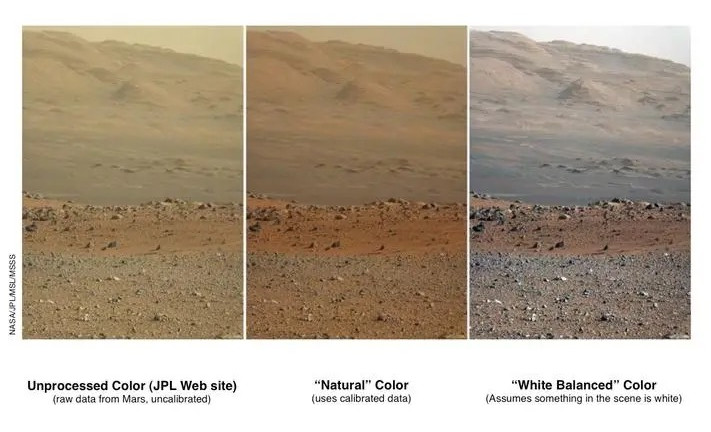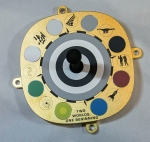
In the SAM Mars yard at Biosphere 2, the sculpted foam provides the robust shape of sedimentary layers, lava, solidified dunes, and rockfalls that define the very challenge of the geologist to unravel time. The application of the concrete gives solid form and texture to the otherwise too fragile structure made principally of trapped air. And while the two of these alone are ample to give visitors to this Mars yard a story to discover, it is the subtle shifts in color that make clear the differentiations of an ancient lake bed from the unconformity on which it lies or the iron concretions about to break free from the shelf on which they lie.
But when all the images captured by rovers on Mars for more than forty years are digital in origin and processed by computers, How does one know the true colors of Mars?
We called upon the distant Spirit, Opportunity, Curiosity and Perseverance rovers, reviewing myriad photos they have generated against the same color metrics applied to the photos received on Earth by NASA and countless university students and researchers. The on-board Mars rover color calibration targets provide a baseline to inform how one might adjust the pixel values, from the raw image to a color balance given the atmospheric conditions of that day, to what that landscape might look like if on Earth instead. The latter becomes important as we compare features on Earth to those on Mars in order to ascertain their origin.

SAM team member and planetary geology student Tasha Coelho built an image deck based on her work in Dr. Jim Bell’s lab at the School of Earth and Space Exploration, Arizona State University. Luna Powell then prepared six sample tints for the baseline concrete color upon which the painters hired by Danica Vallone of Red Hen Industries will push and pull highlights and shadows to give this one-of-a-kind construct its own life.


